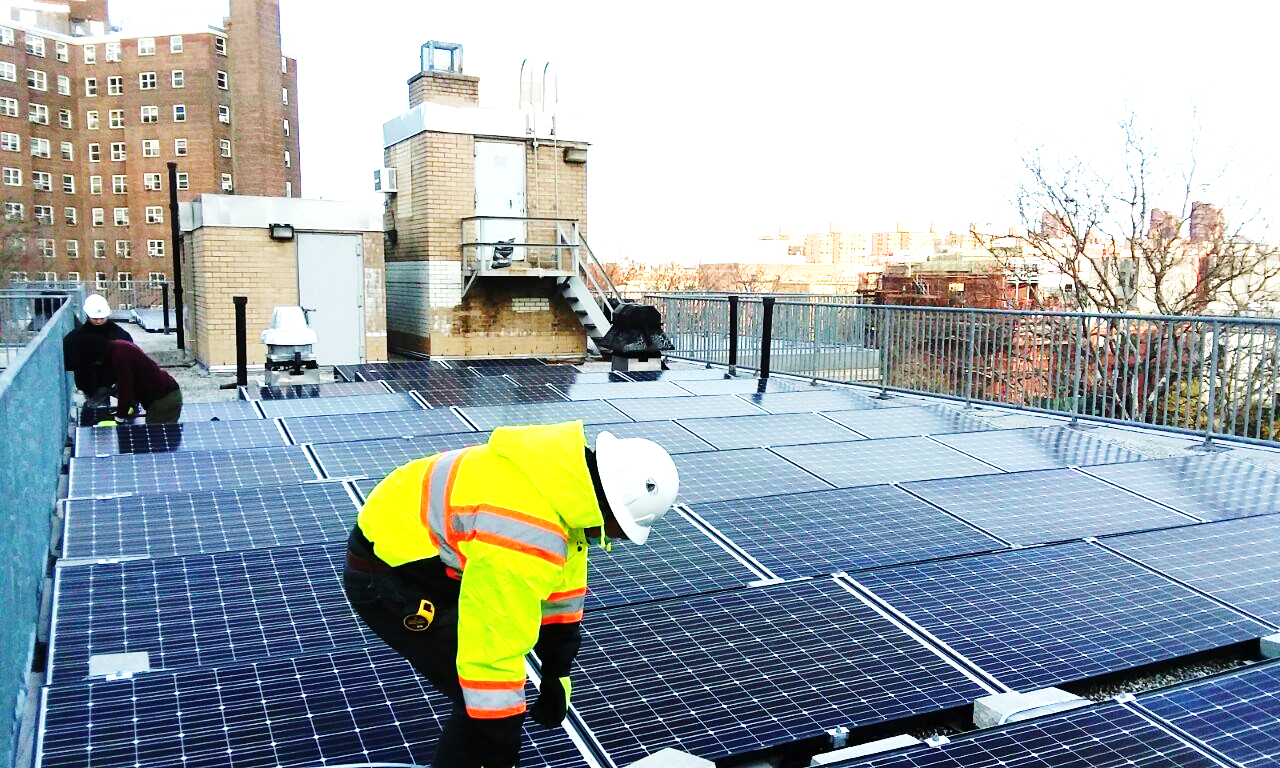With Solar Panels on NYCHA Roofs, Initiative Looks to Give Energy Savings to Low-Income New Yorkers


A new initiative seeks to give some low-income New Yorkers access to renewable energy, saving them a few bucks in the process. And it’s making use of public housing roofs to do it.
The initiative, called Community Power, allows residents living in income-restricted affordable housing to get their energy from solar panels installed on the roofs of three NYCHA developments. In doing so, they’ll save an average of $120 per year on their electricity bills.
The panels have already been installed on the roofs of the Glenwood Houses in the Flatlands section of Brooklyn, as well the Carver Houses in northern Manhattan. Panels will also come to the Kingsborough Houses in Crown Heights. Together, they’ll generate about 1.2 megawatts of electricity as part of a broader NYCHA goal of installing 25 megawatts of solar capacity on its properties by 2025.
While most NYCHA residents don’t pay their own electricity bills and are therefore ineligible for the program, about a dozen public housing residents have been included in a workforce training program that enables them to work installing the technology.
“We are determined to build an inclusive clean energy future with opportunities for all,” said Tim Cawley, CEO of Con Edison, said in a statement announcing the program. “Our Community Power program is giving apprentice installers the chance to develop a marketable skill in a growing field, while providing low- and moderate-income customers with access to clean energy and savings on their utility bills.”
The project is run by a group of nonprofits including Solar One, WE ACT for Environmental Justice, the Brooklyn Movement Center, and Green City Force, along with a consumer-owned energy cooperative, Co-op Power, with Con Ed as a sponsoring partner.
The new installations will have the capacity to provide power for about 350-400 households, but there’s still space available in the program. Project representatives told Bklyner about 56 households have signed contracts to reserve their spot in the program, and 79 others have qualified and are reviewing contracts now.
A similar project under a different partnership is installing solar panels on the Queensbridge Houses in Long Island City, and future installations will likely expand access to more households.
“The important first step for us was really verifying that this program model could work,” Ellen Zielinski, NYCHA’s Director of Energy & Sustainability, told Bklyner. “With the successful construction installation and subscriber outreach that we’re doing, we feel confident now to expand the program.”
That outreach may not have been seamless—the Glenwood Houses Tenant Association president, Hattie Hightower, told Bklyner that she was unaware of the program’s details. But in addition to the workforce training, NYCHA also benefits from a very small rental payment for the subsidized installations: between $11,000 and $12,000 per year, which is funneled back into the maintenance budget for the housing complexes.
That is, of course, a small drop in the bucket compared to potential massive budget deficits facing NYCHA in the coming years. But, local officials say, the project is a positive step toward a greener city and a win for everyone involved.
“This initiative prioritizes clean energy and provides jobs at a time when both are sorely needed,” Council Member Alicka Ampry-Samuel, who chairs the Council’s Committee on Public Housing, said in a statement. “I look forward to seeing local residents work on this project, which will further connect them to sustainability in their communities.”




